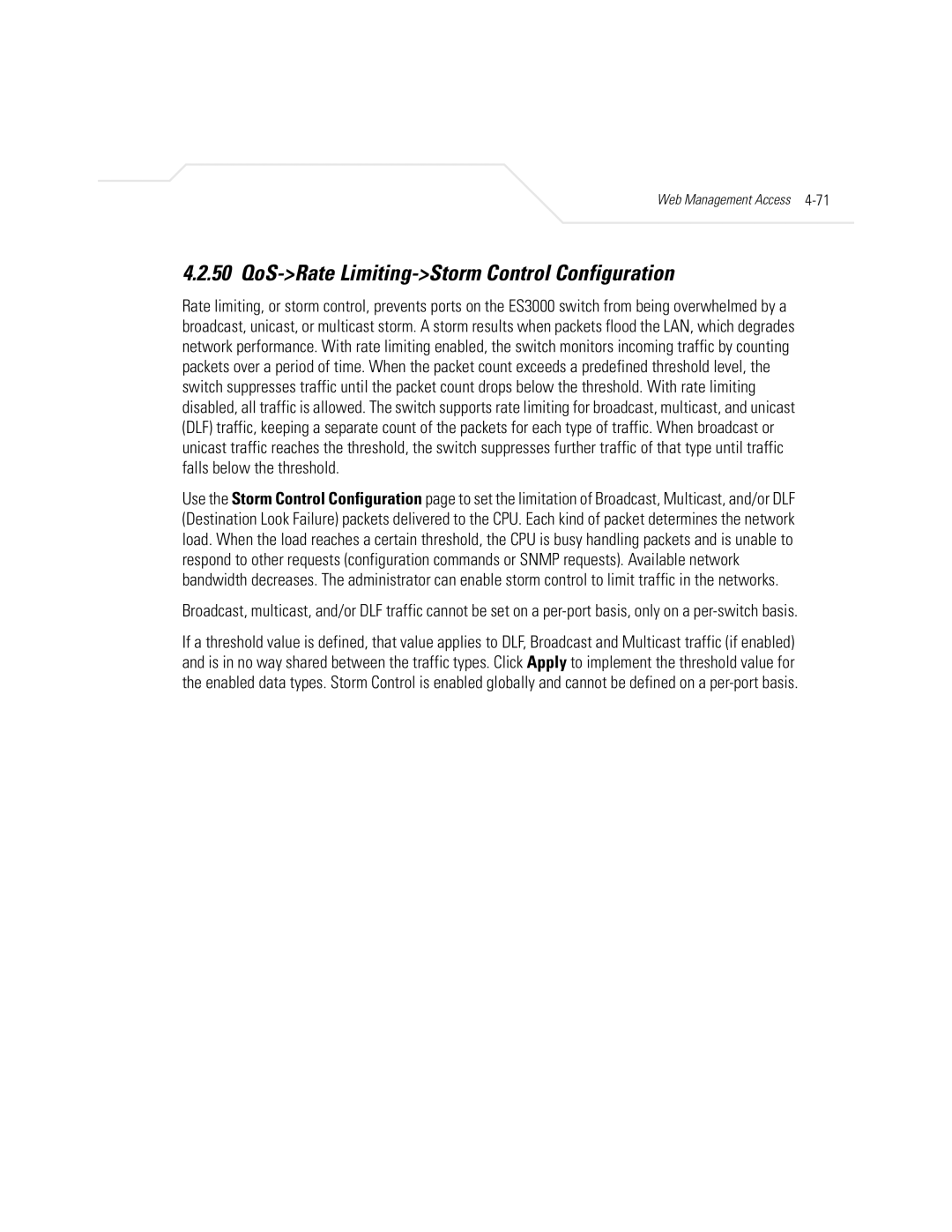
Web Management Access 4-71
4.2.50 QoS->Rate Limiting->Storm Control Configuration
Rate limiting, or storm control, prevents ports on the ES3000 switch from being overwhelmed by a broadcast, unicast, or multicast storm. A storm results when packets flood the LAN, which degrades network performance. With rate limiting enabled, the switch monitors incoming traffic by counting packets over a period of time. When the packet count exceeds a predefined threshold level, the switch suppresses traffic until the packet count drops below the threshold. With rate limiting disabled, all traffic is allowed. The switch supports rate limiting for broadcast, multicast, and unicast (DLF) traffic, keeping a separate count of the packets for each type of traffic. When broadcast or unicast traffic reaches the threshold, the switch suppresses further traffic of that type until traffic falls below the threshold.
Use the Storm Control Configuration page to set the limitation of Broadcast, Multicast, and/or DLF (Destination Look Failure) packets delivered to the CPU. Each kind of packet determines the network load. When the load reaches a certain threshold, the CPU is busy handling packets and is unable to respond to other requests (configuration commands or SNMP requests). Available network bandwidth decreases. The administrator can enable storm control to limit traffic in the networks.
Broadcast, multicast, and/or DLF traffic cannot be set on a
If a threshold value is defined, that value applies to DLF, Broadcast and Multicast traffic (if enabled) and is in no way shared between the traffic types. Click Apply to implement the threshold value for the enabled data types. Storm Control is enabled globally and cannot be defined on a
